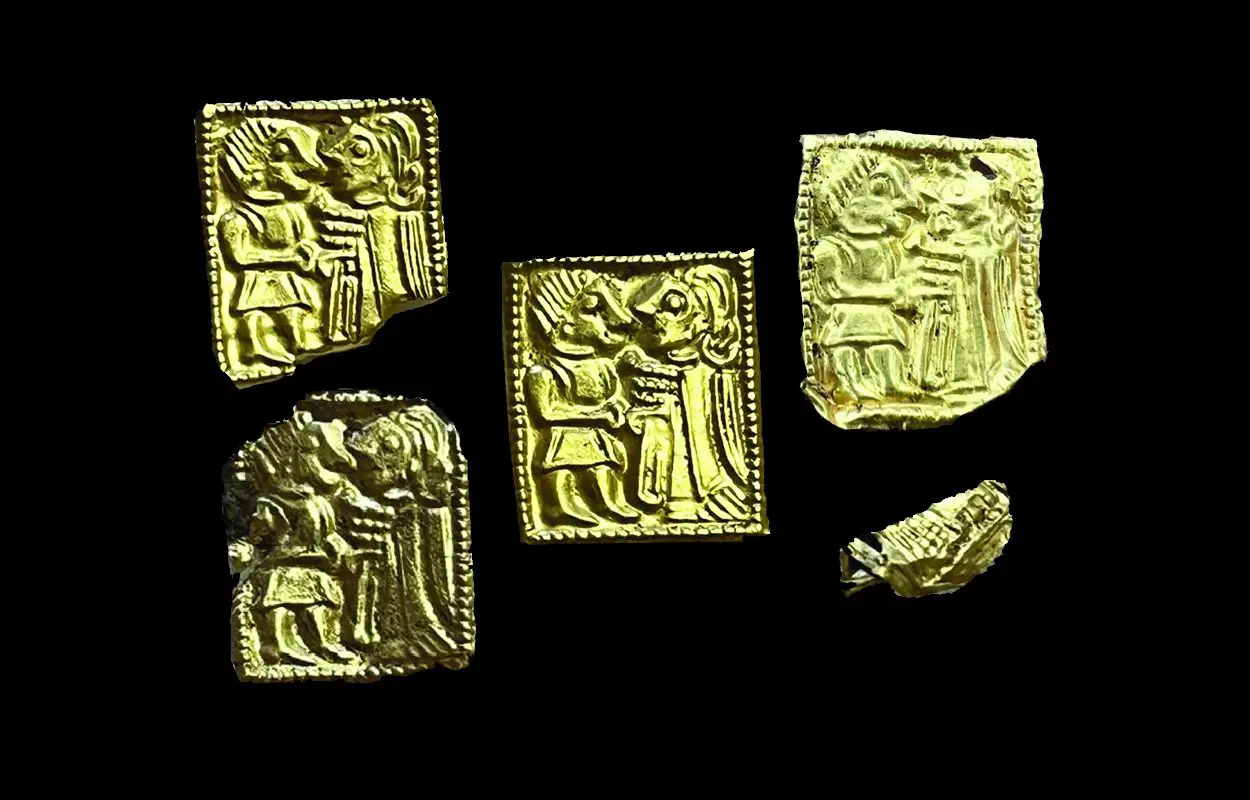In a press announcement by the University of Oslo’s Museum of Cultural History, archaeologists have discovered a votive gold hoard during road development works south of Lillehammer on the shores of Lake Mjøsa, Norway.
Excavations have found five tiny pieces of rectangular sheet gold decorated with motifs and stamped imagery depicting a man and a woman. The objects were discovered in the remains of a pagan temple, where previous excavations have uncovered thirty similar stamped gold objects in the vicinity over the past three decades.
The building measures around fifteen metres in length and was likely used for ritual drinking, however, it is unlikely that any feasting took place due to the lack of domestic archaeological evidence.
The latest objects were found beneath the structure in the wall runs and in adjacent postholes, suggesting that they were ritually placed as votive offerings in the form of a sacrifice or a religious act to protect the building before it was constructed.
According to the researchers, the objects date from the Merovingian era sometime between AD 550 to the Viking Age, and may have been “temple money” for ritual entry.
Nicolai Eckhoff from the University of Oslo, said: “They can also be interpreted ideologically as representing the mythical ancestors or the descendants of chiefs and first families, and may then have served as an authentication of the ruling families’ power-political demands and ruling role.”
“And it is also suggested that the couple motifs reflect the hierogamy myth, the holy wedding between the god Frøy and the jotun daughter Gerd, or that they may have been used as an offering when celebrating a wedding or in fertility rituals,” Eckhoff added.
Header Image Credit : Museum of Cultural History





